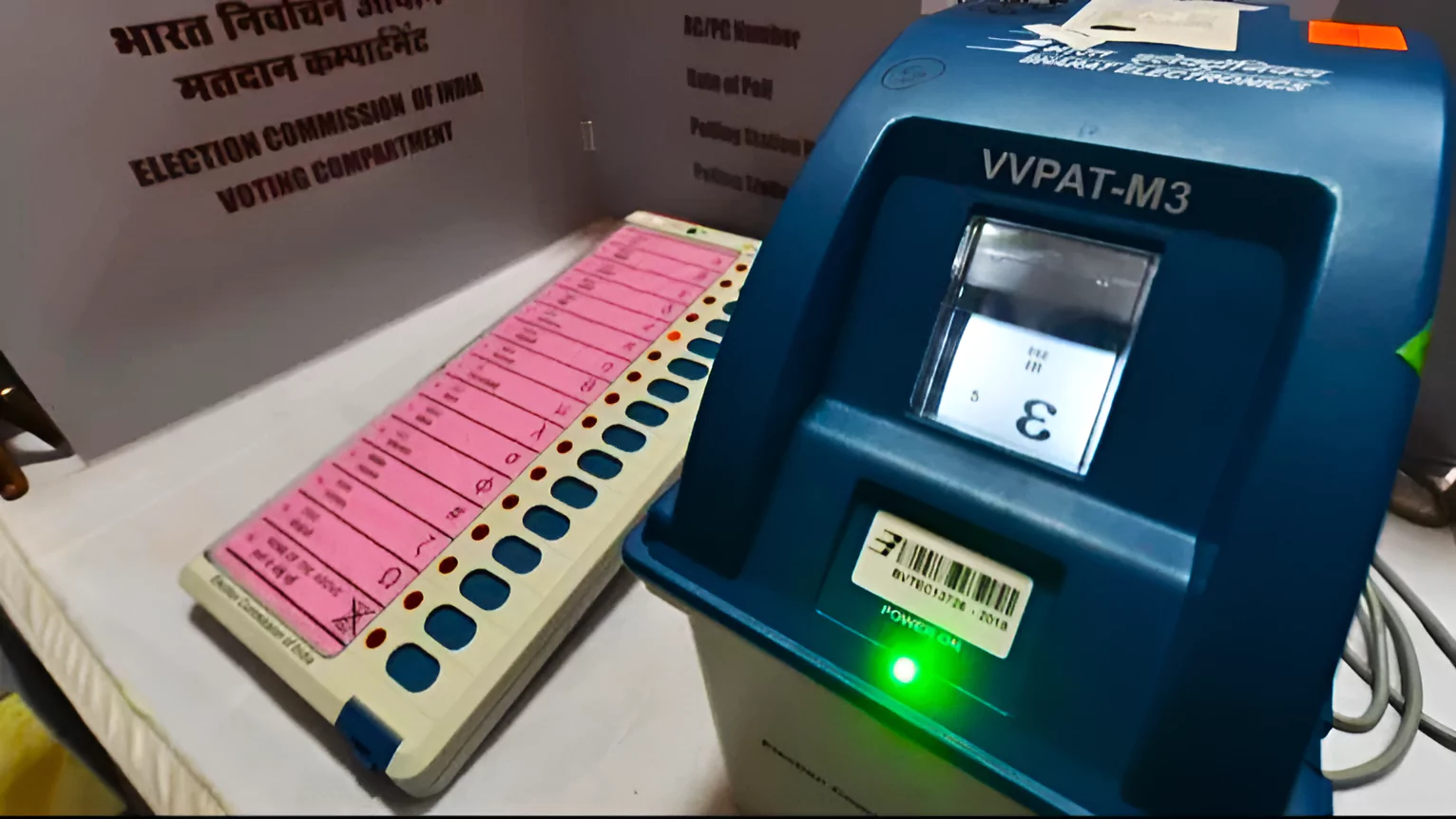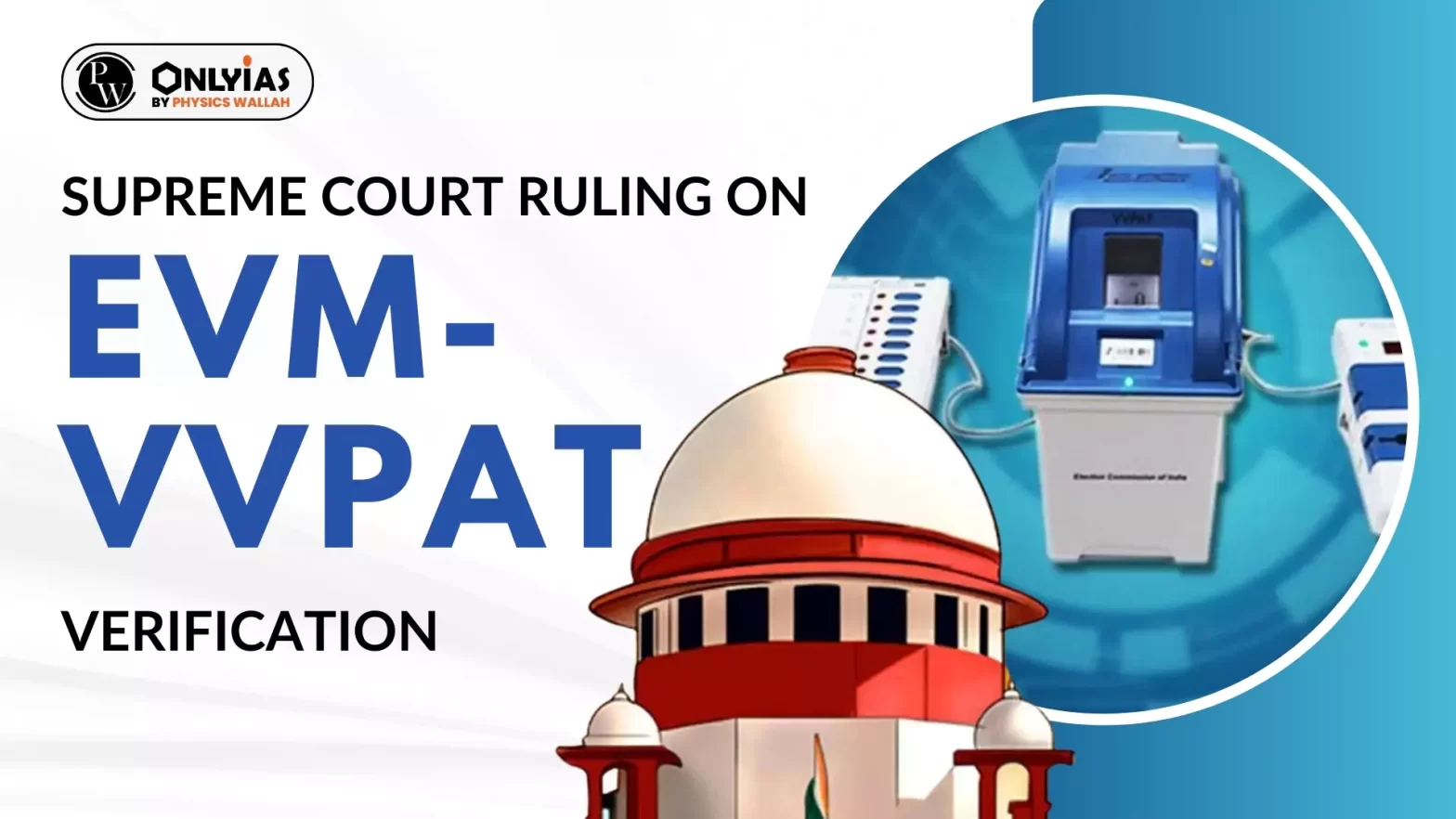Context
Recently, the Supreme Court of India rejected the demand for 100% verification of the paper trail left by the votes cast through electronic voting machines.
Supreme Court on EVM-VVPAT Verification Case

- Paper Trail Introduction: The introduction of a paper audit trail itself was in response to apprehensions that voters had no way of ascertaining if their votes were recorded correctly.
- Irony of Verification: It is ironical that the verification system put in place to address such fears itself has become a bone of contention as to the extent to which the paper trail has to be verified.
Enroll now for UPSC Online Course
Recommendations of Supreme Court on EVM-VVPAT Verification Case
- Increase in the Number of polling stations: In another case, it favored the increase in the number of polling stations in which VVPAT verification would be done from one per Assembly constituency or segment to five.
- Automated VVPAT Counting: Justice Sanjiv Khanna has suggested that VVPAT slips may be counted through machines, and that symbols loaded in the VVPAT units may be barcoded for easy counting in future.
- Securing Symbol Loading Units: The Court said that the symbol loading units be secured and kept in safe custody for 45 days after declaration of results.
- EVM Micro-controller Verification: The top two losing candidates could seek a verification of the micro-controllers in 5% of the EVMs in specified polling booths so that tampering, if any, may be detected.
Ensuring Electoral Trustworthiness
- Non-Interference with Electoral Verification: This is not the first time that the Court has declined to interfere with the system in place; it had earlier refused to order 50% verification of the paper trail in one case and 100% verification in another.
- Review of Administrative and Technical safeguards: The Court has utilized this petition to review the administrative and technical safeguards in the system and found nothing to impair its faith in it.
- Suspicion Free elections: It ought to be clear that such technological advancement alone can make the process suspicion-proof.
- Trust Deficit:A broader observation is that the concerns and doubts regarding potential manipulation signal a notable lack of trust in the Election Commission of India, unprecedented in previous times.
Conclusion
To ensure the trustworthiness of elections in India, the Election Commission must work on addressing these challenges through technical improvements, increased transparency, raising awareness, and proactively tackling legal issues.
Also Read: : Ensuring Transparency and Autonomy In the Election Commission of India
![]() 27 Apr 2024
27 Apr 2024


